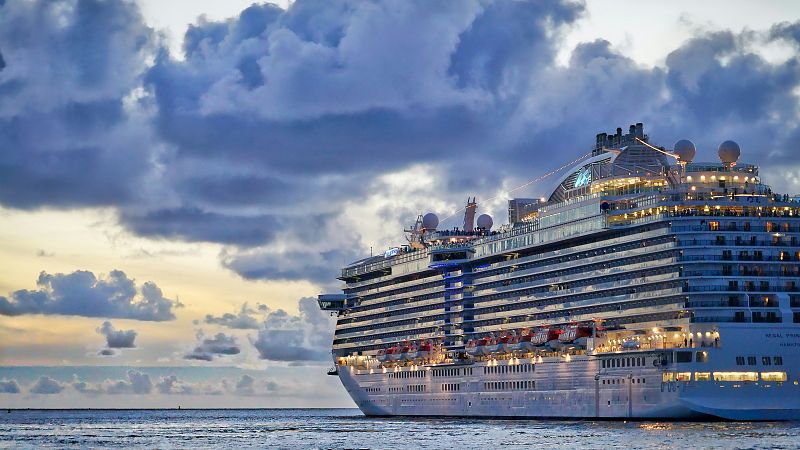Is the future of cruising threatened by overtourism? Navigating the industry’s troubled waters

Since travel resumed post-pandemic, cruising has made a swift comeback.
This resurgence has rekindled the debate over its environmental impact and strain on popular destinations.
In 2023, cruise travel surpassed 2019 pre-pandemic levels recording 31.7 million passengers, according to the Cruise Lines International Association (CLIA) 2024 State of the Industry Report.
With 84 per cent of baby boomers and Gen Xers and 81 per cent of millennials planning to return to sea, cruises remain a dominant and enduring travel choice.
However, industry leaders still need to work to address passengers’ sustainability concerns.
Cruise ships banned from dozens of overwhelmed destinations
The cruise industry travels to every part of the world, including Antarctica.
However, some ports have responded to cruise guests by implementing tourist fees, limiting the number of ships in port, or prohibiting ships from docking altogether.
Venice banned cruise ships from docking at its port. Many cruise lines still offer ‘Venice’ itineraries, but they now dock in nearby cities, such as Trieste or Ravenna, and bus passengers into the city.
The Alaskan capital Juneau faces overwhelming cruise traffic during its short season. Welcoming 1.6 million visitors annually, the city plans to limit daily cruise passengers in 2026.
Santorini in Greece sees more cruise visitors than its population can handle, prompting local authorities to limit the number of ships allowed to dock daily.
On this popular Greek island, cruise passengers frequently encounter tension from locals, even with just one ship in port.
Cruise passengers are increasingly suffering the wrath of locals fed up with overtourism, as residents greet ships with protests and chants. In extreme cases like in Barcelona, citizens are spraying water on tourists, forcing them to leave the city’s main attractions.
Recently, locals in Amsterdam protested and prevented Royal Caribbean’s nine-month world cruise ship from docking by blocking locks that the boat needed to use to enter the port.
Cruising damages waterways and threatens ecosystems
As well as contributing to overtourism, those opposing cruise travel say that the industry destroys the planet with high emissions, and damages waterways and reef systems.
They worry that with more and bigger ships environmental damages will increase.
“I would not go on a cruise for several reasons,” says Emese Maczko, owner of Eco Lodges Everywhere. “These megaships have a huge environmental footprint and are overwhelming small destinations.”
Staggered arrivals and private islands: How cruises are becoming more sustainable
One way cruise lines can make their type of tourism more sustainable is by staggering their arrivals into frequently overcrowded ports.
Itineraries can limit the quantity of ships in a single port by scheduling arrivals on different days or spending less time in port.
In Mykonos, for example, ships stagger arrival times, with one docking in the early morning and another in the afternoon.
This strategy reduces overcrowding while still allowing cruise passengers to experience popular destinations.
Some cruise lines purchase islands and incorporate those stops into their most popular itineraries.
It’s planned that 10 cruise line-owned destinations and five new private islands or beach clubs will open in the next two years.
Some of the most popular private island experiences are in the Bahamas, where cruisers enjoy crystal-clear water and powdery white sand.
Disney now owns two private stops: Castaway Cay and Lookout Cay at Lighthouse Point.
Carnival Corporation has Half Moon Cay and Princess Cay, and plans to open Celebration Key in July 2025.
Royal Caribbean offers its popular private island, Perfect Day at Coco Cay, on most Bahamas itineraries. It’s a favourite stop for cruisers - and some passengers select their itineraries specifically so they can visit it.
Virgin Voyages, the adults-only cruise line owned by Richard Branson, doesn’t have an entire island but instead offers a beach club option in Bimini, a chain of Bahamian islands east of Miami.
How cruise ships are becoming less environmentally damaging
CLIA highlights the goal of many cruise lines to have net zero emissions by 2050.
To achieve this, cruise lines have invested in technological advancements aimed at reducing their environmental footprint.
Around 32 pilot projects and collaborative initiatives are underway with fuel producers and engine companies testing sustainable fuels and technologies.
In its 2023 report, CLIA outlines several key initiatives to make cruise travel a sustainable form of tourism for years to come.
With Advanced Wastewater Treatment Systems (AWTS), CLIA cruise lines pledge not to discharge untreated sewage during regular operations.
These high-tech AWTS systems often surpass standards set for coastal cities and international regulations.
Some cruise lines also use advanced infrastructure to produce up to 90 per cent of their water on board, reducing the need to take water from areas with limited resources.
To reduce the impact on marine life, CLIA members are expected to slow down in sensitive areas and use technology to reduce underwater noise and vibrations.
Some ships also host scientists to support marine life research.
Certain ships repurpose all waste, use excess heat from machinery for water heating, and reduce food waste with bio-digesters.
In terms of greener fuels, ships with flexible propulsion systems will have the potential to adapt to bioLNG, synthetic LNG or methanol when these become more readily available.
Yesterday

